Far Eastern flight V. Chkalov
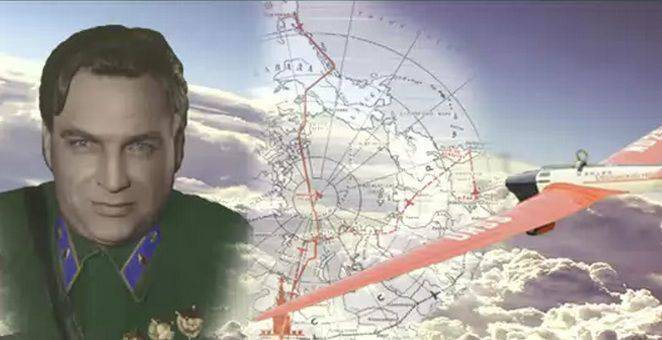
During the first five-year periods of the USSR, it was rapidly becoming an industrial power, in many respects reaching the level of the leading countries of the world. Heavy aircraft construction is successfully developing in the country, long-haul flights are being made, demonstrating our success to the world. One of these flights was made on July 20-22 by the crew of the ANT-25 aircraft (RD), consisting of V. Chkalov, G. Baidukov and A. Belyakov from Moscow to the island Udd.
Such a flight became possible thanks to the design by A.N. Tupolev aircraft ANT-25 (RD). This machine favorably differed in its aerodynamic qualities and capabilities. The plan for the aircraft originated in 1932. He was embodied in a year. It really was (at that time) an advanced aircraft specially designed for long-haul flights. A classic monoplane with unusually large wings, whose span was 34 meters and lengthening - 13,1. The machine was installed retractable chassis and the first domestic design of the screw de-icing device. It is worth mentioning the fact that the leading designer of the ANT-25 was a talented young designer KB A.N. Tupolev P. Sukhoi, the future creator of the famous Su brand.
The flight tests of the ANT-25 aircraft were supervised by E. Stoman, a full cavalier of the Tsarist army. And the first to take to the air was a record aircraft, the famous Soviet pilot M. Gromov, the chief pilot of the company A. Tupolev. First of all, Gromov carried out a real research work on the engine stands, wondering whether the AM-34 engine, which was installed on the ANT-25, could work on a lean air-fuel mixture, the percentage of fuel in which was supposed to be lower than optimal (of course, in acceptable limits). This would allow in-flight fuel economy, which for long-haul flights was very significant. In addition, it is possible to clarify the capabilities of the motor when working at high altitudes.
The first short-distance flights of the aircraft took place in the summer of 1934. They confirmed that the car has good stability, well obey the steering wheels. And yet, when it was created, not everything went flawlessly. The first two long-distance trips across the triangle Moscow-Ryazan-Tula-Moscow failed: the engine was still unstable and was “fired by the carburetor”.
Success came in early September 1934. Then the plane, taking off from Moscow and completing a given route, landed in Kharkov, having spent 75 flight hours and traveled 12 411 kilometers. In this flight, M. Gromov and his crew as part of co-pilot A. Filin and navigator I. Spirin achieved an outstanding result in the length of a non-stop flight, breaking the record that had belonged to this France. However, this achievement was not registered as a world record, due to the fact that the USSR was not then a member of the FAI.
In the winter of 1934-1935, two ANT-25 were ready for long-range flights. The crew of one vehicle was approved: the commander of the ship was the famous polar pilot S. Levanevsky, the co-pilot, a student of the Air Force Academy named after N. Zhukovsky, pilot G. Baidukov, navigator - V. Levchenko. Professor Belyakov of the Academy of the Air Force was appointed reserve navigator and at the same time responsible for conducting crew navigation training.
During one of the receptions in the Kremlin, the hero of the Chelyuskin epic, S. Levanevsky, said that he was ready to “wave” from Moscow to San Francisco on the route across the North Pole. Soon, consent was received for this, and preparations began for ANT-25 for flight.
At the very beginning of August 1935, from the Schelkovsky airfield, the crew of S. Levanevsky on the ANT-25 aircraft headed for America through the pole. Initially, everything went well, but on approaching the Kola Peninsula, a leak of engine oil was found from the drainage tube that enveloped the left wing. It was impossible to sit down with a large supply of fuel, it had to be drained, but a new trouble arose: the fuel did not merge from the tanks in the wings and spread out along the planes. I had to go back and sit down in Krechevitsy. When landing, there was a fire, but the soldiers who came in time quickly put out the fire.
After that, S. Levanevsky categorically rejected ANT-25, which he reported at the reception at I. Stalin, in the presence of A. Tupolev. Moreover, he practically accused Andrei Nikolaevich as an enemy of the people. G. Baidukov was also present, he had a different opinion about the capabilities of the aircraft. He was sure of the reliability of the machine and, moreover, was deeply convinced that S. Levanevsky, sent to the USA personally by I. Stalin to select another plane there for the flight to America, would not find a better car there.
Soon a member of the Revolutionary Military Council of the USSR, Air Force Chief Y. Alksnis appointed G. Baidukov as chief pilot for aviation factory, where together with A.N. Tupolev, P.O. Sukhim and A. Mikulin, he eliminated the ANT-25 defects identified in flight. The task was completed within four months and reported to J. Alksnis.
Considering that S. Levanevsky and V. Levchenko were in America, G. Baidukov told the head of the Air Force: “We need a very authoritative pilot who will be entrusted by the country's leadership through a pole.” To which J. Alksnis replied: “You know many pilots in our country. Choose yourself, and we will help you to get a new crew. ”
According to G. Baidukov, there was no better candidate than Valery Chkalov, with whom he worked shoulder to shoulder at the Air Force Institute. They knew each other well. But, as paradoxical as it may seem, the first conversation between G. Baidukov and V. Chkalov was unsuccessful. Chkalov refused, because he considered himself a fighter pilot and had no experience of long flights, including instrumentation.
However, Chkalov’s modesty further convinced G. Baidukov that he had made the right choice. And finally, Valery Pavlovich agreed. He conducted an independent flight on ANT-25, in order to assess its qualities on its own. The flight took place on a February day with low cloud cover. After the flight, Chkalov declared: “It’s just a miracle, not a plane! What are the fellows Tupolev. "
Without much thought, a letter was written to the Political Bureau of the Central Committee with a request to allow an ANT-1936 flight from Moscow to the USA via the North Pole to be carried out in 25. Valery Pavlovich handed a letter to Sergo Ordzhonikidze. After a while V. Chkalov, G. Baidukov and A. Belyakov were invited to the Kremlin. J. Stalin, in his office, announced that the members of the Politburo had read their letter. But meteorologists say that without an isobar traced across the North Pole, it is impossible to make a weather forecast on the route. Chkalov tried to argue, saying that the flight of one of the goals is precisely the assessment of the real weather in the Arctic. But Stalin stopped him and said: “Flying across the pole is, of course, important, but today we need a non-stop flight from Moscow to Petropavlovsk-Kamchatsky. I have already spoken with Comrade Blucher to be ready to meet you in the territory of his army. At the same time he told him about the importance of the flight, equating it to the action of the two field armies. ”
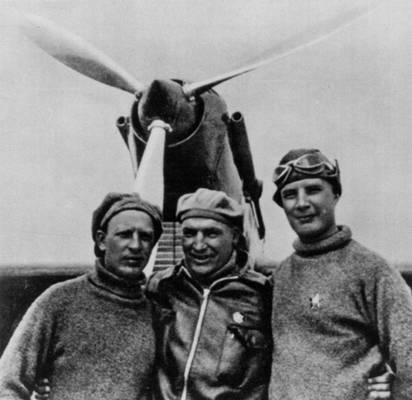
... Early in the morning of July 20, 1936 of the year, from a specially constructed launch pad of a Moscow-based airfield near Schelkov, began its legendary flight to the Far East ANT-25 with a crew of V. Chkalov, G. Baidukov and A. Belyakov. He had to go without landing over the swamps of Belozero, the mountainous Kola Peninsula, over the cold waters of the Barents Sea and Northern Earth, to be a thousand miles from the North Pole, to cross the taiga wilderness of Yakutia and reach Kamchatka.
So, overloaded with a large supply of fuel, the plane passed below the factory Schelkov pipe. The first twelve hours of the plane, led by Chkalov. Baidukov performed the tasks of the navigator and radio operator, Belyakov had a time of rest. By the middle of the day, ANT-25 reached the Barents Sea, and at sunset - to the island of Victoria.
In the first few minutes of July 21, the plane flew over Franz Josef Land. Here the first trouble was waiting - the car quickly began to become covered with ice. In addition, the crew met with an extensive cyclone. Nineteen route breaks were recorded in the logbook ... Attempting to combat icing by changing the flight altitude did not succeed either.
After Tiksi Bay, the flight was already over land. 22 July has arrived. The winged car went to the Pacific Ocean, and soon to Petropavlovsk-Kamchatsky. In the most difficult conditions, the goal was achieved, but there was still a lot of fuel left, and Chkalov decided to continue the flight to Sakhalin Island. A pennant was dropped over Petropavlovsk, and the plane took a new course, flew over the Sea of Okhotsk.
The cold sea was greeted by the crew. It was raining, the fog went all the way to the water. The crew decided to descend and change course to Khabarovsk, hoping to have time to fly to the end of daylight hours at the mouth of the Amur River, then hoped to go over the river. The rain did not allow us to determine the flight altitude, the coastal cliffs rose dangerously ahead. Chkalov abruptly led the plane up, but the icing began, which at altitudes of the order of 2500 meters led to a threatening vibration. There was only an urgent decline. At 21 an hour 25 minutes the crew radioed: “Fog to the ground. Trouble.
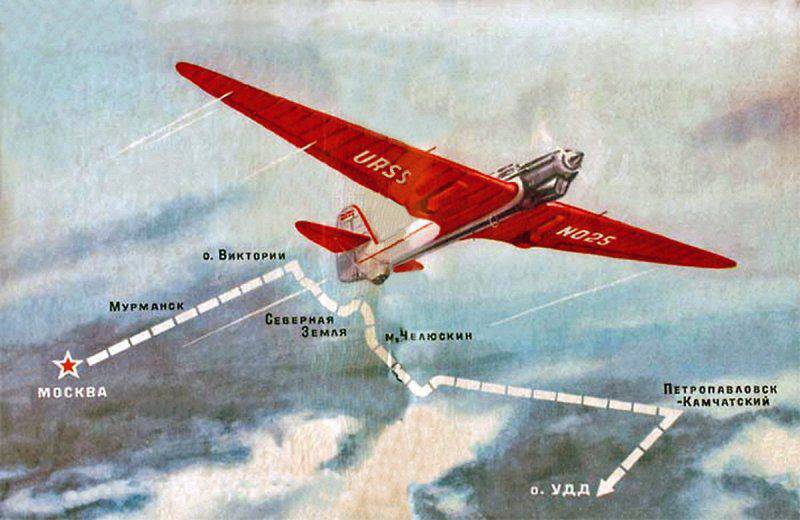
Coming out of the clouds, literally 10-15 meters from the surface of the water, we determined that the plane was located in the area of three small islands: Keos, Langres and Udd (now they are called Belyakov, Baidukov, Chkalov Islands). Already quickly darkened, it was raining heavily. Chkalov started the plane to land on the island Udd. Above the ravine, the pilot added gas and, ordering Baidukov to run off into the tail, skillfully put the car in gear. However, when landing one of the boulders fell between the wheels of the left landing gear and completely tore off one of them.
The flight lasted 56 hours 20 minutes. Its range was 9374 kilometer. The crew gave a radiogram: “To everyone, to everyone. The crew of the ANT-25 made a safe landing near Nikolaevsk, on the island of Udd. Everything is good".
The flight of V. Chkalov’s crew to the Far East was enthusiastically covered by the media in our country and abroad.
The wheel damaged on landing on the island of Udd was repaired by a TB-3 plane from Moscow with a group of workers, E. Stoman, who arrived in two days by plane. It was impossible to take off from the continuous sand where the plane landed, and we had to build a unique wooden runway from which the crew of V. Chkalov started to Moscow.
On the tenth of August, the red-winged ANT-25, accompanied by an escort of twelve aircraft, passed over the capital and headed for Schelkovo. Exactly at 17 hours, it landed. There is no need to say how enthusiastically the residents of the capital were waiting for him, who came to the airport to meet the crew. For this successful flight, V. Chkalov and his comrades were awarded the title Hero of the Soviet Union.
In November, the 1936 International Aviation Exhibition was held in Paris 15. The central exhibit of the USSR presented the legendary ANT-25 aircraft, which caused great interest in Europe and the world. The aircraft was demonstrated with all its special arctic equipment and equipment necessary for flying over the Arctic and in case of a forced landing on water, on ice or on land.
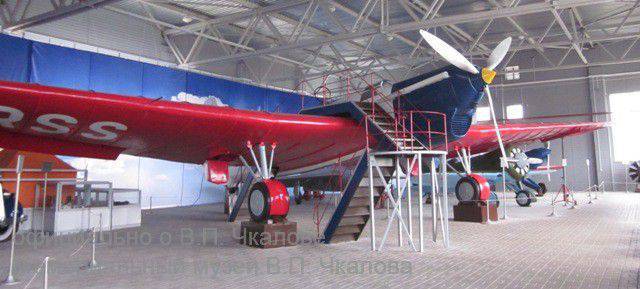
It remains to add that the ANT-25 aircraft, on which a non-stop flight to the Udd island was made, has survived to this day. The rarest relic of aviation science and technology of our homeland is located in the hangar pavilion at the V. Chkalov house-museum in his homeland, in the former suburb of Vasilevo, now the city of Chkalovsk, Nizhny Novgorod region.
Sources:
Yu Kirilenko. Born / Yu. Kirilenko, V. Rybalko. // Wings of the Motherland: Sat. articles. M .: DOSAAF USSR, 1983. C.72-77.
Belyakov A. Valery Chkalov. M .: DOSAAF USSR, 1987. C. 111-118.
Yakubovich N.V. Chkalov. The rise and fall of the great pilot. M .: Eksmo, 2012. C. 218-240.
Matulevich B. No Equal // Civil Aviation. 1997. No.6. C. 26-27.
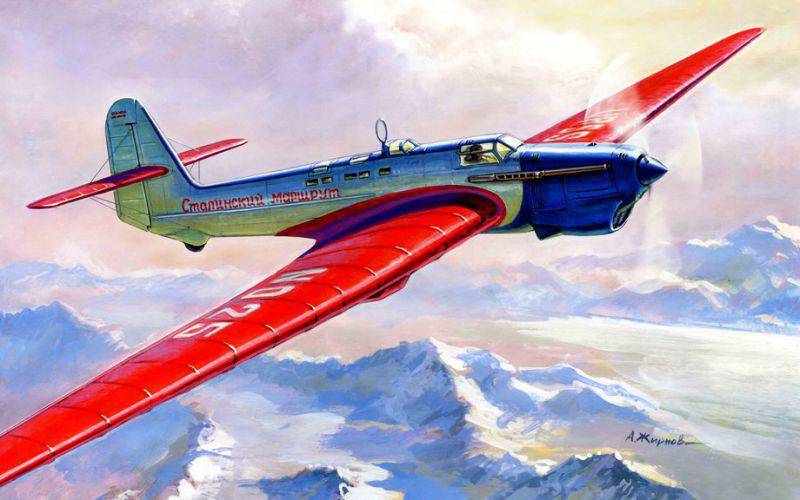
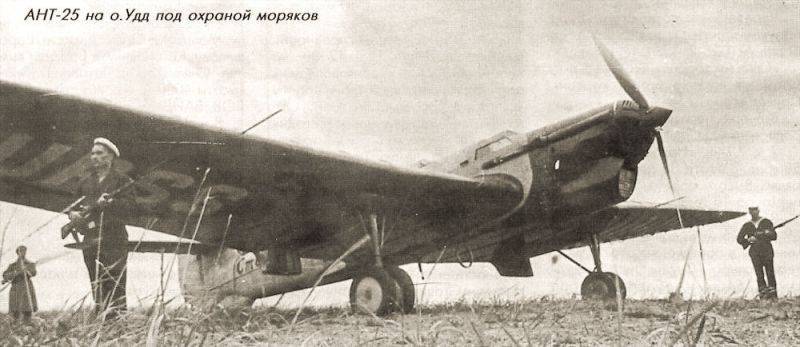
Information